Travel
By Mary Ann Simpkins
Top Canadian destination
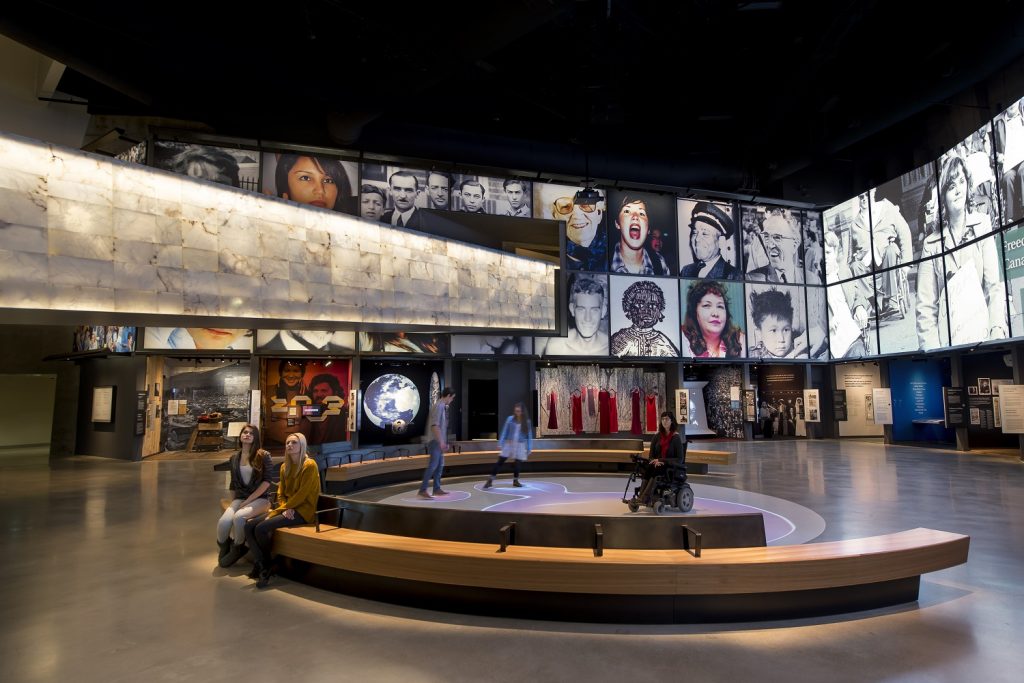
Often underrated Winnipeg sits quietly in the middle of Canada. Beneath the tranquil façade, however, is a city named this past July “one of the World’s 100 Greatest Places” by Time magazine. Winnipeg made the annual list along with the only other Canadian destination, Jasper, Alberta. Time based its selection on locations with “new offerings and exciting experiences.” The recently opened Qaumajuq, the world’s largest public collection of contemporary Inuit art, helped seal the selection. Qaumajug’s undulating white stone exterior mimics the shape of northern landscapes. Large windows reveal a threestory curved glass vault, its crystal-clear shelves featuring 5,000 carvings. Glass edging the vault’s base gives a glimpse of lower shelves holding some 9000 more pieces. Temporary and permanent exhibits on the upper floors include bead jewellery carved from antlers, wearable art, and seal skin writings on wall hangings. The cold white facade distinguishes the Inuit gallery from the adjoining, gray-toned modernistic Winnipeg Art Gallery (WAG). Founded in 1912, WAG is one of Canada’s earliest civic art museums. Its diverse collection of art and 17th to 21st-century decorative works as well as a summertime rooftop sculpture garden.
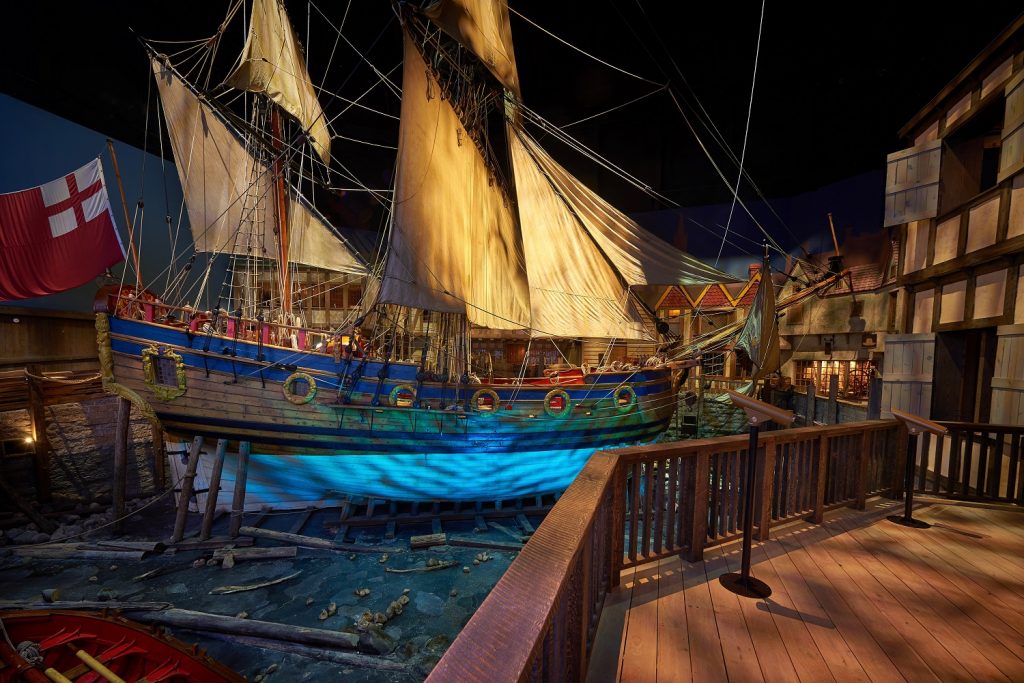
The Forks
Time magazine also highlighted the annual Warming Huts competition, which attracts architects from Japan to France. The small temporary huts line cleared paths on the frozen Red and Assiniboine Rivers, giving skaters a piece of art every 183 metres. Designs have varied from Frank Gehry’s deconstructed igloo to a piece of carved foam, finished with a bright, red plastic coating. Access to the River Trails is at the Forks, where the Red and Assiniboine Rivers converge. This historic meeting point for generations of Indigenous people was also the landing site for boats bringing supplies and settlers including my paternal Great Grandparents who travelled from England to Canada then through northern U.S. to Winnipeg in 1882. The sprawling site now encompasses an old railway building filled with shops, another with food stalls, a children’s museum a hotel, and the Canadian Museum for Human Rights. Sky-blue glass symbolizing the wings of a dove wraps around the earth-coloured limestone museum. The 23- storey-high Israel Asper Tower of Hope (named for the visionary behind the museum) easily identifies the world’s only human rights museum. The sole national museum outside of Ottawa. Glistening Spanish alabaster-lined ramps and elevators take you up seven floors where videos, interactive devices, and the many interpretive guides help you learn about events ranging from the Holocaust to the Rwandan genocide and Canadians who strive to make a difference. “The emphasis is on people, not artifacts,” says my guide, Marilyn Dykstra. She adds, “My husband has visited more than 20 times. He still hasn’t seen everything.”
St. Boniface
Cables attached to a mast like a ship hold the pedestrian bridge crossing the river from the Forks to the French community of St. Boniface. Named Esplanade Riel, the foot/cycle bridge honours the Metis leader. Hanged for treason in 1885, Louis Riel was later recognized as the founder of Manitoba. He’s buried in St. Boniface’s Cathedral’s graveyard. Founded in 1818 by French missionaries upon an earlier settlement of Swiss mercenaries, St. Boniface is the largest French-speaking community in Western Canada. The historical district maintains the French culture through its bistros, galleries, cultural centres, and Canada’s longest continually running theatre company, Le Cercle Molière. Winnipeg’s oldest building, a former Gray Nuns Convent, is now the St. Boniface Museum. Mannequins in period costumes, typical rooms of the past, and historical artifacts tell the history of the French Canadians and Metis in, Manitoba.
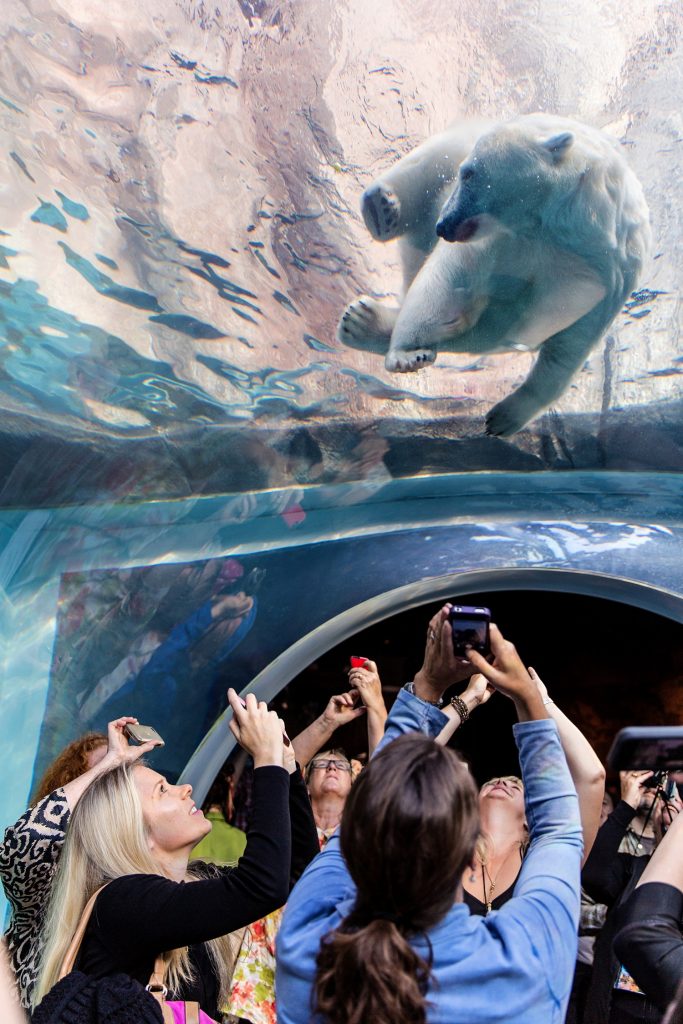
Exchange District
At the beginning of the 1900s, Winnipeg was booming. Fur and wheat traders and the world’s largest rail centre made the “Peg” the fastest growing city in North America. Echoes of its past remain in the Exchange District’s 150 heritage buildings. Bank of Montreal employees luxuriated in a copy of a Roman temple boasting a three-million-dollar gold leaf-clad ceiling. North America’s largest and best-preserved heritage buildings are the city’s arts and cultural hub with galleries, theatres, and trendy restaurants. This National Historic Site often doubles as 1920s Chicago in movies. Three separate companies were filming throughout the city during my visit. In the adjacent Theatre District, the premier performance space is the Centennial Concert Hall. It’s home to Canada’s first professional ballet company, the Royal Winnipeg Ballet, the Manitoba Opera, and celebrating its 100th season next year, the mWinnipeg Symphony Orchestra.
After Justin Beiber’s performance in Winnipeg, he and Selena Gomez dined in the Manitoba Museum of Man and Nature aboard the “Nonesuch.” A full-size replica of the 19-foot ketch that sailed from England to Hudson Bay in 1668 in search of furs. According to Winnipeg Trolley Tour guide, Eric, you can have the same experience for $5,000. A Metis hunter on horseback raising his rifle above a teeth-baring stampeding buffalo is one of many dioramas illustrating Manitobans’ relationship with nature. A tramway half embedded in the sidewalk outside the museum recalls workers’ attempts to tip one car during Winnipeg’s violent 1919 general strike.
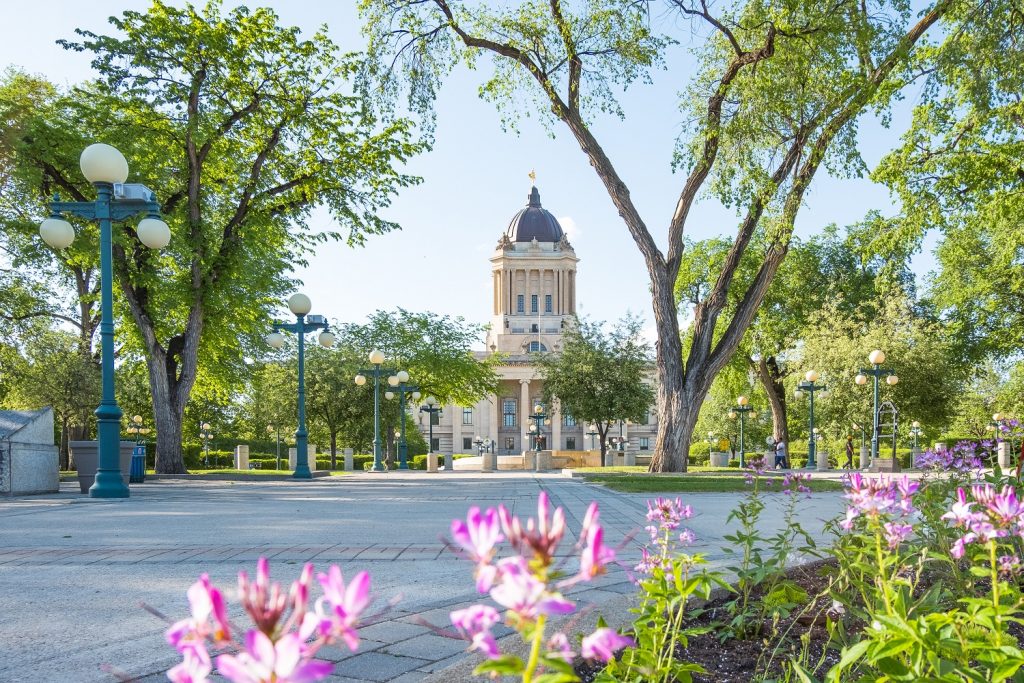
Manitoba Legislature
A statue of Sir William Stephenson, the Winnipeg-born spy in charge of British counterespionage in World War II, is just one of many statues in the Memorial Park. Patterned after Washington’s National Mall, the green lawn leads to the Manitoba Legislative. Constructed of Tyndall stone embedded with visible fossils of sea sponges and snails, the building replicates King Solomon’s temple. The Egyptian god, Ra, is one carving above the entrance’s six Ionic columns. Atop the building, a gold-lead encrusted statue, the Golden Boy. Designed by a Freemason architect, Frank
Worthington Simon, the 1920 building overflows with ancient Egyptian symbols, occult icons and hidden codes. All in the hope of creating a better environment for people entering the legislature. A Hermetic Code Tour deciphers the secrets.
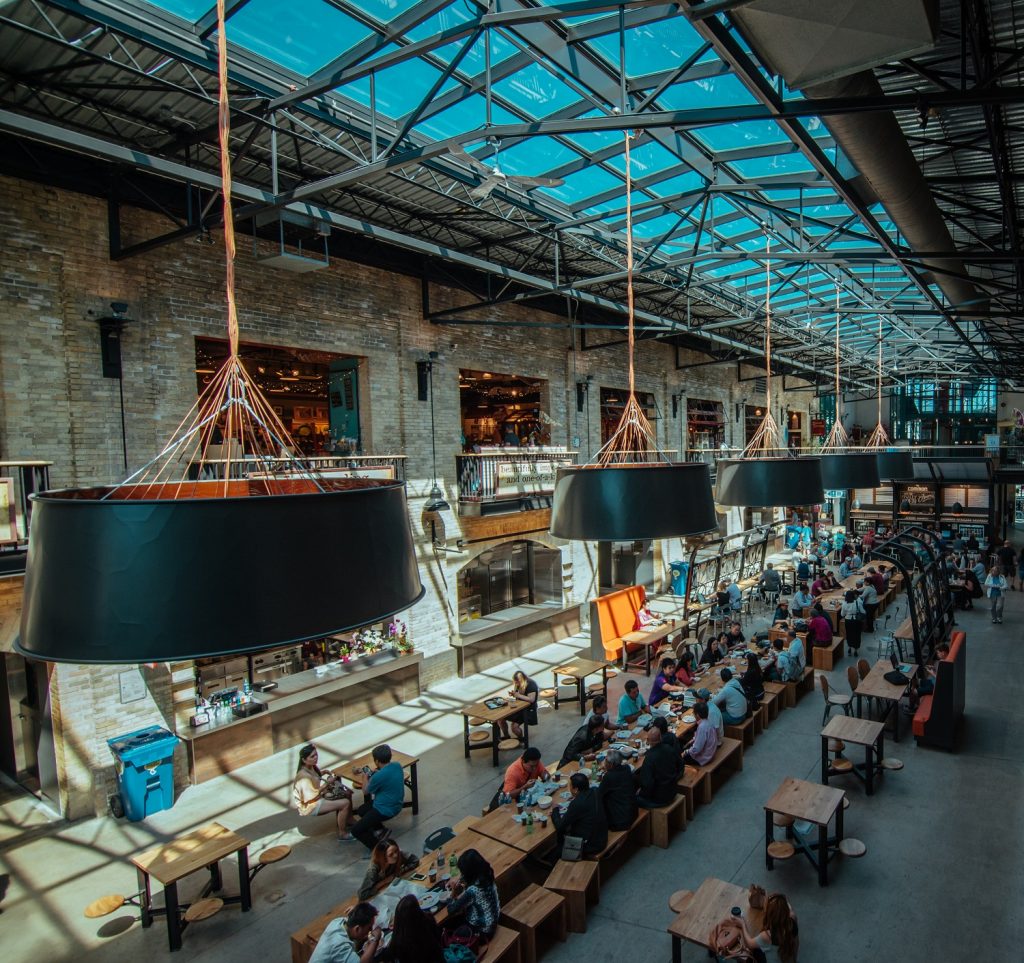
Assiniboine Park
Winnipeg’s year-round playground, Assiniboine Park, was designed by Frederick Todd, who also restored Montreal’s Mount Royal. Canada’s largest urban forest park houses the Lyric Theatre, the Leo Mol Sculpture Garden with some 300 bronze pieces, the colourful English gardens, a zoo with over 200 different animals, and the Journey to Churchill exhibit. Walk through tunnels while overhead, polar bears dive, swim, and frolic. The park’s newest attraction, the Gardens of the Leaf, covers 10 hectares with six areas of diverse plantings, from the Indigenous People’s Garden to the Sensory Garden. At the centre, an indoor multi-seasonal garden. Divided into a tropical and Mediterranean biome, the Leaf also encloses a butterfly and horticultural section and Canada’s largest indoor waterfall. In the summer, the park vibrates with free concerts, movies, and performances by the Royal Winnipeg Ballet.
Beyond Winnipeg
Costumed interpreters explain life at Lower Fort Garry on the outskirts of Winnipeg. A Hudson Bay Company (HBC) fort, its Governor ruled all the HBC’s locations from here to Honolulu. Established in the 1830s, North America’s oldest still intact fur-trading post contains such buildings as the Governor’s House, the prison, the fur loft, and the sales shop. Outside the fort, a First Nations encampment. South of the Peg in Steinbach, Mennonites display their culture at the year-round Mennonite Heritage Village. Among the 29 structures is an 1881 Old Colony Worship House, an 1877 house with a reed thatched roof and attached barn and built into the ground, the Semelin house. The first Mennonites to this area in 1874 survived the winter in these homes made of sod, soil, grass, and wood. Galleries in the village centre tell the Russian Mennonite story from the 1500s to now. A restaurant offers such traditional dishes as vareniki, similar to perogies but stuffed with cottage cheese, a hearty borsch, local sausage, and stone-ground whole-wheat bread made with locally milled flour.
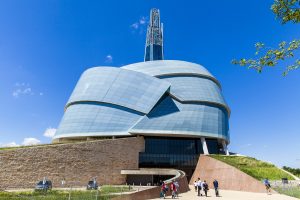
If you go
Air Canada flights all connect through Toronto.
Flair Airlines and WestJet offer direct flights from Ottawa to Winnipeg.
More information
Tourism Winnipeg: tourismwinnipeg.com
Qaumajuq: wag.ca/qaumajuq/
The Forks: theforks.com
Canadian Museum for Human Rights: humanrights.ca
St. Boniface Museum: msbm.mb.ca
Exchange District: exchangedistrict.org
Manitoba Museum of Man and Nature: manitobamuseum.ca
Legislative Assembly of Manitoba: gov.mb.ca/legislature/index.html
Assiniboine Park: assiniboinepark.ca
Lower Fort Garry: pc.gc.ca/en/lhn-nhs/mb/fortgarry
Mennonite Heritage Village: mennoniteheritagevillage.com






